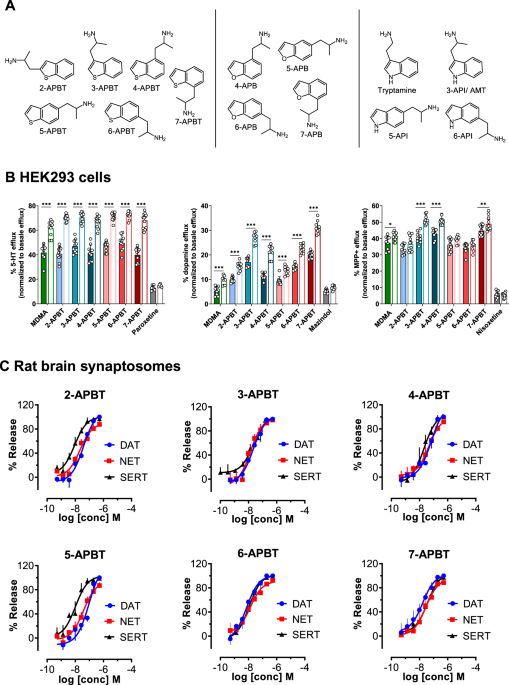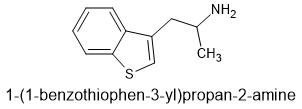simstim
Bluelighter
- Joined
- Apr 20, 2021
- Messages
- 6,606

(2-Aminopropyl)benzo[β]thiophenes (APBTs) are novel monoamine transporter ligands that lack stimulant effects but display psychedelic-like activity in mice - Neuropsychopharmacology
Derivatives of (2-aminopropyl)indole (API) and (2-aminopropyl)benzofuran (APB) are new psychoactive substances which produce stimulant effects in vivo. (2-Aminopropyl)benzo[β]thiophene (APBT) is a novel sulfur-based analog of API and APB that has not been pharmacologically characterized. In the...
According to this article benzothiophene based "amphetamines" are more potent releasers of serotonin than their benzofuranyl analogs. They also have a higher affinity for the 5-ht-2 receptors and cause rats to develop the stereotype head twitch which indicates psychedelic like activity.
Benzothiophenes are just like benzofurans except benzothiophenes have a sulfer where benzofurans have an oxygen (and indoles have a nitrogen).
The three chemicals that they picked out to highlight were 3-APBT, 5-APBT, and 6-APBT.
5 and 6-APBT are analogous to 5 and 6-APB, and are therefore relatives of MDA.
3-APBT is analogous to aMT! It is in fact aMT with a sulfer substituted for the nitrogen on the indole ring.
It should be possible to make benzothiophene analogs of many (or all) tryptamines (just like there are already analogs of tryptamines which are benzofuranyl rather than indolyl).
The three chemicals highlighted in the article are reported to be non selective monoamine releasing agents... read triple releasing agents.
Oddly though they seem to lack locomotor stimulant properties so it doesn't sound like any of them will become the next MDMA.
There you have it! You heard it here first. A new class of psychedelic, entactogenic, and empathogenic "amphetamines" will arise.
Bring on the benzothiophenes!!!
Last edited:







